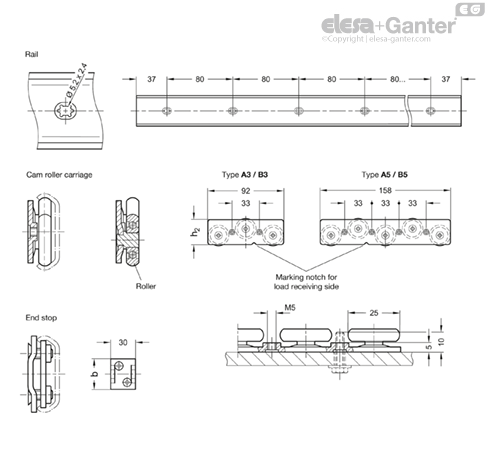GN 1490
Linear guide rail systems
Steel / Stainless Steel, with interior travel path

GN 1490
Linear guide rail systems
Steel

GN 1490-NI
Linear guide rail systems
Stainless Steel
GN 1490
Linear guide rail systems
Steel




Type
Type A3: with one cam roller carriage with 3 rollers
Type A5: with one cam roller carriage with 5 rollers
Type B3: with two cam roller carriages with 3 rollers
Type B5: with two cam roller carriages with 5 rollers
Identification no.
No. 0: without end stop
No. 1: with one end stop
No. 2: with two end stops
Guide rail
- Steel ZB
Zinc plated, blue passivated
- Stainless steel AISI 430 NI
Plain
Cam roller carriage
- Base body
Stainless steel AISI 304
- Roller
Ball-bearing, 2RS
Stainless steel AISI 440C
- Roller bearing grease
FDA compliant, class H1
Permanent lubrication
End stop
- Stainless steel AISI 304
- Rubber stop (TPU), hardness ≈ 80 Shore A
Operating temperature -20 °C to 100 °C
LOOKING FOR ALUMINIUM PROFILES:
Feeling overwhelmed with what product to choose?
Don’t delay, give OIC a call and talk to us about your industrial application. Our aim is to help your business choose the right Elesa+Ganter element for the function you need. Whether you need to clamp, close, connect, control, level, manoeuvre, measure or set. OIC has an Elesa+Ganter machine element to fit your need.
We want to find out about your industrial application need and where we can help. Our contact details are below.

